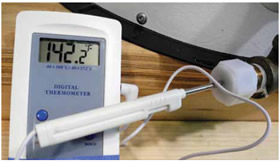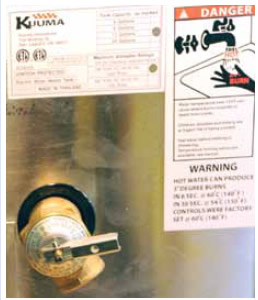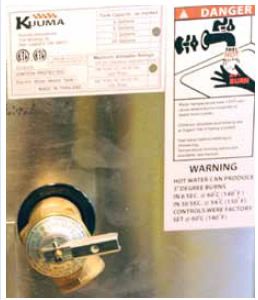

It is surprising to see equipment with no moving parts carry such an array of safety warnings. But any time water and higher-voltage AC electricity are mixed, there are details worth thinking about. The risk of shock can be lessened through a firm commitment to three-conductor wiring that follows the American Boat and Yacht Councils guidelines. This includes maintaining the continuity of the green grounding that links the boiler and metal housing to the boats ground. Strict adherence to high-quality crimp connectors, appropriate wire gauge, and care in keeping the neutral and hot wires consistent with the vessels and docks power supply are paramount.
Testers noted that the Quicks Nautique BX2012 heater is available with heating element options that range from 500 to 1,200 watts, which will require different size circuit breakers and wire gauge. Making sure that an appropriately sized amperage circuit breaker and wire gauge is used is very important. When it comes to galvanic corrosion, Kuuma recommends installing a galvanic isolator in the vessels grounding system. They also advise against using the unit in any raw-water cooling system.
Raritan installs a large magnesium anode and honors its five-year boiler warranty only if the anode has been checked annually. Quick recommends a double pole switch to disconnect both the hot and neutral leads when the unit is shut off.
Too much of a good thing is also perilous, and scalding can become an issue. Water temperatures in the 130- to 140-degree range can cause burns if immersion persists for more than a few seconds. Heat-exchanger temps can exceed 180 degrees, and the water in the boiler can approach that benchmark. Mixer valves and lengthy runs can help, but a crew needs to recognize that the thermostatic control only works when the unit is being heated by the AC element. Exercising caution before showering is a good idea when the engine has run for hours.







































